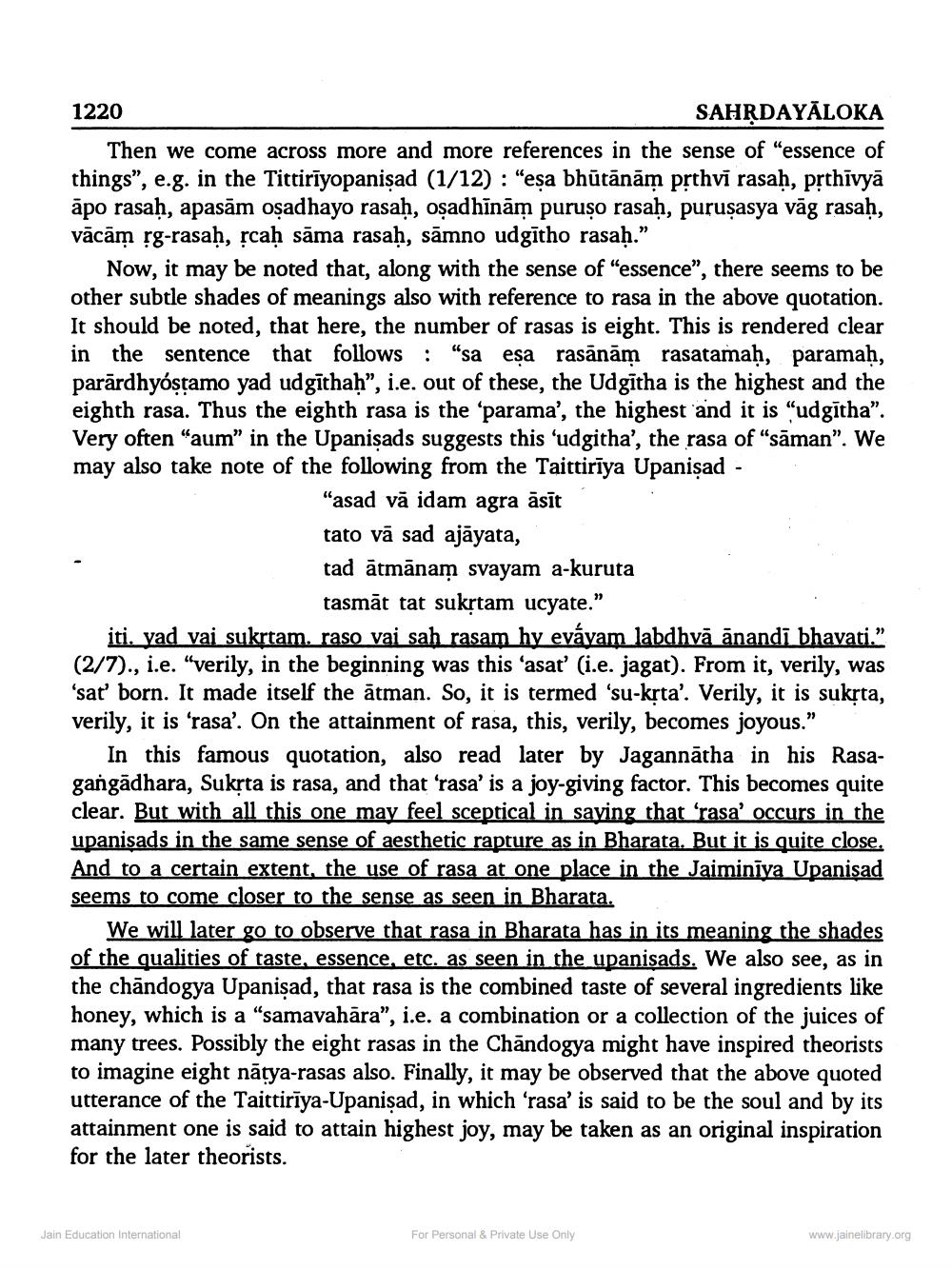________________
1220
SAHRDAYĀLOKA Then we come across more and more references in the sense of "essence of things", e.g. in the Tittiriyopanişad (1/12): “esa bhūtānām prthvi rasaḥ, prthivyā apo rasaḥ, apasām osadhayo rasaḥ, osadhīnām puruso rasah, puruşasya vāg rasah, vācām rg-rasaḥ, scaḥ sāma rasaḥ, sāmno udgītho rasah.”
Now, it may be noted that, along with the sense of “essence”, there seems to be other subtle shades of meanings also with reference to rasa in the above quotation. It should be noted, that here, the number of rasas is eight. This is rend in the sentence that follows: "sa eşa rasānām rasatamaḥ, paramah, parārdhyóstamo yad udgīthah”, i.e. out of these, the Udgitha is the highest and the eighth rasa. Thus the eighth rasa is the 'parama', the highest and it is "udgītha". Very often "aum" in the Upanişads suggests this 'udgitha', the rasa of “sāman". We may also take note of the following from the Taittirīya Upanişad -
"asad vā idam agra āsīt tato vā sad ajāyata, tad ātmānam svayam a-kuruta
tasmāt tat sukstam ucyate.” iti. yad vai sukrtam. raso vai sah rasam hy eváyam labdhvā ānandi bhavati.” (2/7)., i.e. “verily, in the beginning was this ‘asat' (i.e. jagat). From it, verily, was 'sar' born. It made itself the atman. So, it is termed 'su-krta'. Verily, it is suksta, verily, it is 'rasa'. On the attainment of rasa, this, verily, becomes joyous."
In this famous quotation, also read later by Jagannātha in his Rasagangadhara, Sukta is rasa, and that 'rasa' is a joy-giving factor. This becomes quite clear. But with all this one may feel sceptical in saying that 'rasa' occurs in the Upanisads in the same sense of aesthetic rapture as in Bharata. But it is quite close. And to a certain extent, the use of rasa at one place in the Jaiminiva Upanisad seems to come closer to the sense as seen in Bharata.
We will later go to observe that rasa in Bharata has in its meaning the shades of the qualities of taste, essence, etc. as seen in the upanisads. We also see, as in the chāndogya Upanisad, that rasa is the combined taste of several ingredients like honey, which is a “samavahāra", i.e. a combination or a collection of the juices of many trees. Possibly the eight rasas in the Chăndogya might have inspired theorists to imagine eight nātya-rasas also. Finally, it may be observed that the above quoted utterance of the Taittirīya-Upanişad, in which 'rasa' is said to be the soul and by its attainment one is said to attain highest joy, may be taken as an original inspiration for the later theorists.
Jain Education International
For Personal & Private Use Only
www.jainelibrary.org




